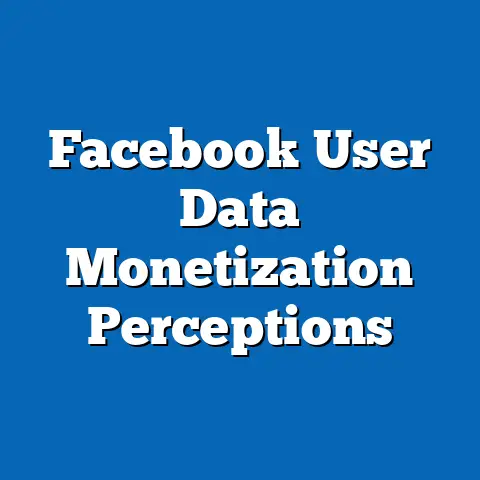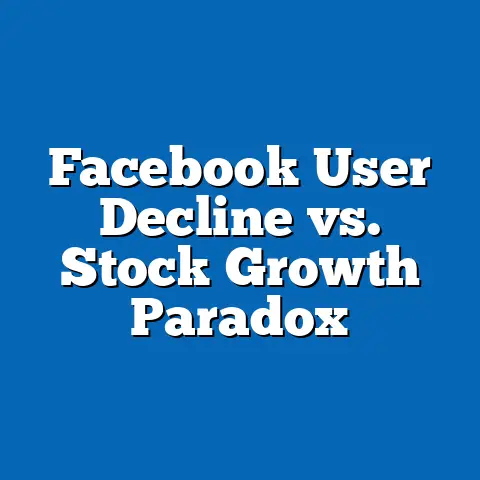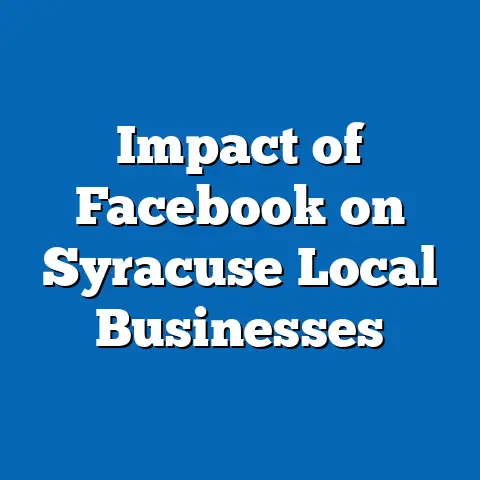Facebook as a News Source by Region
There’s a widespread misconception that Facebook is universally trusted as a primary news source across the globe, often painted as a monolithic platform where users indiscriminately consume and share information. Contrary to this belief, the reality is far more nuanced, with significant regional, demographic, and cultural variations in how Facebook is used for news consumption. Data from the Reuters Institute Digital News Report 2023 reveals that while 28% of global internet users access news via Facebook, this figure fluctuates dramatically by region—ranging from 45% in parts of Southeast Asia to as low as 15% in Western Europe.
This misconception overlooks the diverse ways in which trust, access, and platform usage differ across geographies, shaped by factors such as internet penetration, media literacy, and local political climates. In this comprehensive analysis, we will explore how Facebook functions as a news source across various regions, diving into key statistics, historical trends, and demographic patterns. By unpacking these differences, we aim to provide a clearer picture of the platform’s role in the global news ecosystem.
Methodology and Data Sources
To ensure accuracy, this article draws on data from reputable sources such as the Reuters Institute for the Study of Journalism, Pew Research Center, Statista, and World Bank internet usage statistics. The Reuters Institute Digital News Report, an annual survey covering over 90,000 respondents across 46 countries, serves as a primary source for regional and demographic insights on news consumption. Additional data on internet penetration and social media usage comes from Statista and the World Bank, while historical trends are compiled from reports dating back to 2015.
Our analysis focuses on five key regions: North America, Western Europe, Latin America, Southeast Asia, and Sub-Saharan Africa. These regions were selected to represent diverse economic, cultural, and technological contexts. Where relevant, we also incorporate qualitative insights from academic studies on media trust and misinformation to contextualize the data.
Section 1: Global Overview of Facebook as a News Source
Globally, Facebook remains one of the most widely used platforms for news, with 28% of online adults citing it as a source of information in 2023, according to the Reuters Institute. However, this figure has declined from a peak of 36% in 2017, reflecting growing concerns over misinformation and a shift toward other platforms like TikTok and Instagram, especially among younger users. Despite this decline, Facebook’s reach—2.9 billion monthly active users as of Q3 2023 (Statista)—ensures its continued relevance in shaping public discourse.
The platform’s role as a news source is not uniform. Trust in news shared on Facebook varies widely, with only 20% of global users expressing confidence in the accuracy of information encountered on the platform (Reuters Institute, 2023). This skepticism is often linked to high-profile incidents of misinformation, such as during the 2016 U.S. presidential election and the COVID-19 pandemic, which have eroded trust in social media as a reliable news medium.
Section 2: Regional Breakdown of Facebook News Consumption
2.1 North America: High Access, Low Trust
In North America, particularly the United States and Canada, Facebook is used by 24% of online adults for news, a drop from 31% in 2018 (Reuters Institute, 2023). This decline coincides with growing public scrutiny over the platform’s role in spreading misinformation, especially after events like the Cambridge Analytica scandal. Trust levels are notably low, with only 17% of U.S. respondents expressing confidence in news encountered on Facebook.
Demographically, usage skews toward older adults, with 34% of Americans aged 50-64 using the platform for news compared to just 12% of those aged 18-29 (Pew Research Center, 2022). This generational divide reflects broader trends of younger users gravitating toward visual platforms like Instagram and TikTok. Regionally, urban users are more likely to engage with news on Facebook (28%) compared to rural users (19%), possibly due to differences in internet access and media literacy.
2.2 Western Europe: Declining Usage Amid Regulatory Scrutiny
Western Europe shows even lower reliance on Facebook for news, with just 15% of online adults using the platform for this purpose in 2023, down from 22% in 2017 (Reuters Institute). Countries like Germany (12%) and the UK (14%) report some of the lowest usage rates, driven by strong trust in traditional media outlets and stringent regulations on data privacy, such as the EU’s General Data Protection Regulation (GDPR). Trust in Facebook news is also low, with only 14% of respondents expressing confidence in shared content.
Demographic patterns reveal a similar age divide as in North America, with older users (aged 45+) more likely to use Facebook for news (20%) compared to younger users (9% for 18-24-year-olds). Gender differences are minimal, though women are slightly more likely to engage with news on the platform (16%) than men (14%). Historically, usage peaked during the mid-2010s but has since waned as concerns over fake news and algorithmic bias have grown.
2.3 Latin America: High Engagement, Mixed Trust
In contrast to North America and Western Europe, Latin America exhibits high engagement with Facebook as a news source, with 38% of online adults relying on the platform in 2023 (Reuters Institute). Countries like Brazil (42%) and Mexico (39%) lead the region, driven by high social media penetration and limited access to traditional news outlets in rural areas. Internet usage in the region has grown significantly, from 45% in 2015 to 74% in 2022 (World Bank), amplifying Facebook’s role as an information hub.
However, trust remains a concern, with only 23% of Latin American users confident in the accuracy of news on Facebook. Misinformation is a persistent issue, particularly during elections, as seen in Brazil’s 2018 presidential race, where false stories spread widely on social media. Demographically, usage is more evenly distributed across age groups, though younger users (18-34) are the most active at 43%, reflecting the region’s youthful population.
2.4 Southeast Asia: A Dominant News Platform
Southeast Asia stands out as the region most reliant on Facebook for news, with 45% of online adults using the platform for this purpose in 2023 (Reuters Institute). In countries like the Philippines (48%) and Indonesia (46%), Facebook is often the primary news source due to high mobile internet usage—84% of Indonesians access the internet via smartphones (Statista, 2023)—and partnerships like Facebook’s Free Basics, which offers free access to the platform in low-income areas. Historically, usage has risen steadily since 2015, when only 30% cited Facebook as a news source.
Trust levels, however, are mixed, with 29% of users expressing confidence in news accuracy, though this varies by country. Demographic trends show high engagement across all age groups, with minimal gender differences. The region’s reliance on Facebook has raised concerns about misinformation, especially in politically volatile contexts like Myanmar, where the platform was implicated in spreading hate speech during the Rohingya crisis.
2.5 Sub-Saharan Africa: Growing Usage Amid Access Challenges
In Sub-Saharan Africa, 32% of online adults use Facebook for news, a figure that has grown from 25% in 2017 (Reuters Institute, 2023). This increase aligns with rising internet penetration, which reached 39% in 2022, up from 20% in 2015 (World Bank). Countries like Kenya (38%) and Nigeria (35%) show particularly high usage, often due to the affordability of mobile data and the platform’s accessibility in multiple local languages.
Trust in news on Facebook is relatively higher than in other regions, with 31% of users expressing confidence, possibly due to limited alternatives in many areas. Demographically, younger users (18-34) dominate, comprising 40% of news consumers on the platform, while rural access remains a barrier, with only 25% of rural respondents using Facebook for news compared to 42% in urban areas. Historical trends indicate that as internet access expands, so too does reliance on social media for information.
Section 3: Historical Trends and Shifts in Usage
Comparing current data to historical trends reveals a complex evolution in Facebook’s role as a news source. Globally, usage peaked around 2017, when 36% of online adults relied on the platform for news, driven by rapid growth in social media adoption (Reuters Institute). Since then, a gradual decline to 28% in 2023 reflects growing awareness of misinformation and competition from other platforms.
Regionally, North America and Western Europe have seen the steepest declines, with usage dropping by 7-8 percentage points over five years, while Southeast Asia and Sub-Saharan Africa have experienced growth of 5-10 percentage points in the same period. Latin America’s usage has remained relatively stable, fluctuating between 35-40%. These trends highlight how economic development, internet access, and cultural attitudes toward media shape reliance on Facebook for news.
Section 4: Demographic Patterns and Trust Issues
Across all regions, age plays a significant role in Facebook news consumption. Globally, users aged 18-34 are the most active demographic, though their reliance on the platform for news is declining in wealthier regions as they shift to newer apps. Older users (45+) remain more consistent in their usage, particularly in North America and Western Europe, where 30% of this age group still turns to Facebook for news (Pew Research Center, 2022).
Gender differences are generally minor, though women are slightly more likely to use Facebook for news in most regions (29% vs. 27% for men globally). Urban-rural divides are more pronounced, especially in developing regions like Sub-Saharan Africa, where urban users are nearly twice as likely to access news on the platform due to better connectivity.
Trust remains a critical issue, with global confidence in Facebook news hovering at 20%. This figure is lowest in Western Europe (14%) and highest in Sub-Saharan Africa (31%), reflecting varying levels of media literacy and access to alternative sources. High-profile misinformation campaigns have disproportionately impacted trust in regions with polarized political climates, such as North America and Latin America.
Section 5: Data Visualization Description
To illustrate these regional differences, imagine a world map heatmap showing the percentage of online adults using Facebook for news in 2023. Darker shades of blue would dominate Southeast Asia (45%) and Latin America (38%), while lighter shades would cover Western Europe (15%) and North America (24%). A bar chart comparing trust levels across regions would further highlight disparities, with Sub-Saharan Africa’s 31% confidence standing out against Western Europe’s 14%.
A line graph tracing global usage from 2015 to 2023 would depict the peak in 2017 (36%) and subsequent decline, with regional lines diverging—Southeast Asia and Sub-Saharan Africa trending upward, while North America and Western Europe slope downward. These visuals would provide a clear, at-a-glance understanding of the data discussed.
Section 6: Contextual Factors Shaping Regional Differences
Several factors explain the regional disparities in Facebook news consumption. Internet penetration is a key driver, with regions like Southeast Asia and Sub-Saharan Africa seeing rapid growth in mobile access, making Facebook a default news platform for millions. In contrast, wealthier regions with established traditional media ecosystems, like Western Europe, show lower reliance on social media for news.
Cultural attitudes toward authority and media also play a role. In Latin America and Southeast Asia, where trust in traditional institutions can be lower, social media often fills the gap, even if skepticism about accuracy persists. Political events, such as elections or crises, further amplify Facebook’s role, as seen in Brazil and Myanmar, though often with negative consequences like the spread of misinformation.
Regulatory environments are another factor. The EU’s strict data privacy laws and fines on tech giants have fostered caution among users in Western Europe, while less regulated environments in developing regions allow for greater platform dominance. These contextual elements underscore that Facebook’s role as a news source cannot be understood in isolation but must be viewed through a regional lens.
Section 7: Broader Implications and Future Trends
The regional variations in Facebook’s role as a news source carry significant implications for media ecosystems, democratic processes, and public trust. In regions heavily reliant on the platform, such as Southeast Asia and Latin America, the spread of misinformation poses a persistent threat, particularly during elections or public health crises. Governments and organizations must prioritize media literacy initiatives to counteract these risks.
In wealthier regions like North America and Western Europe, declining usage suggests a shift toward diversified news consumption, but it also highlights the challenge of reaching younger audiences who are abandoning Facebook for newer platforms. For Facebook itself, adapting to these trends—through algorithm changes, partnerships with fact-checkers, or enhanced transparency—will be crucial to maintaining relevance as a news source.
Looking ahead, the rise of platforms like TikTok and Instagram, especially among users under 30, may further erode Facebook’s dominance in news delivery. However, in regions with limited internet infrastructure, Facebook’s accessibility and partnerships like Free Basics ensure it will remain a key player for the foreseeable future. The platform’s ability to address trust issues and adapt to regional needs will ultimately determine its long-term impact on global information flows.
Conclusion
Facebook’s role as a news source is far from uniform, shaped by a complex interplay of regional access, cultural attitudes, and demographic trends. While it remains a dominant platform in Southeast Asia (45% usage) and Latin America (38%), its influence is waning in North America (24%) and Western Europe (15%), where trust and usage have declined significantly since 2017. Demographic patterns, such as higher engagement among younger users in developing regions and older users in wealthier ones, further complicate the picture.
By understanding these differences, we gain insight into broader challenges facing the digital news landscape, from combating misinformation to ensuring equitable access to reliable information. As internet penetration continues to grow and new platforms emerge, the evolution of Facebook’s role will remain a critical area to watch, with implications for how billions of people understand the world around them.






